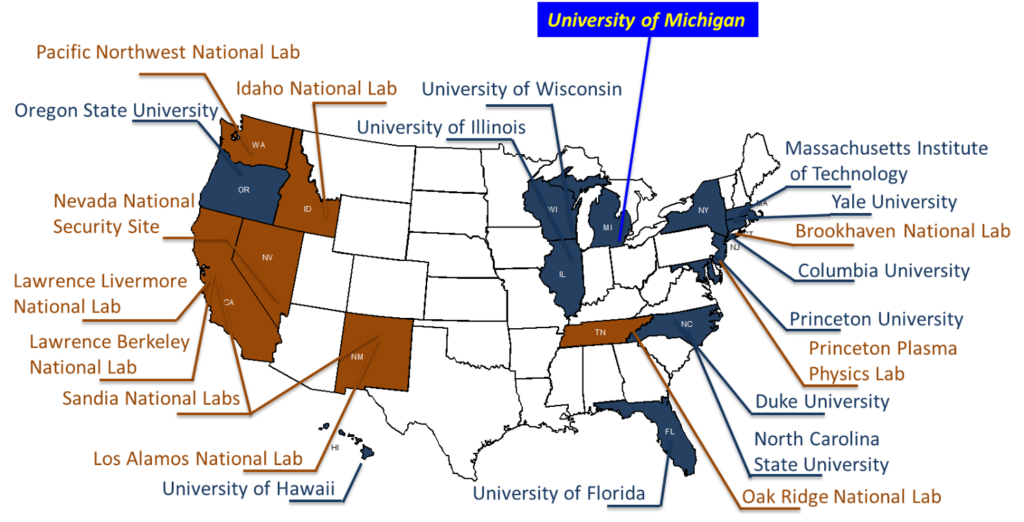The Consortium for Verification Technology (CVT), consists of twelve leading universities and nine national laboratories, working together to provide the research and development and human capital needed to address technology and policy issues in treaty-compliance monitoring. The underlying issues include nuclear nonproliferation and safeguards in support of the mission of the NNSA’s Defense Nuclear Nonproliferation Research and Development office. The university partners to the consortium are University of Michigan (UM), Massachusetts Institute of Technology (MIT), Princeton University, Columbia University, North Carolina State University (NCSU), University of Hawaii (UH), Duke University, University of Wisconsin (UW), University of Florida (UF), Oregon State University (OSU), Yale University, and University of Illinois at Urbana-Champaign (UIUC). The university participants will execute research projects in collaboration with the DOE national laboratories, including Brookhaven National Laboratory (BNL), Los Alamos National Laboratory (LANL), Lawrence Livermore National Laboratory (LLNL), Sandia National Laboratory (SNL), Idaho National Laboratory (INL), Oak Ridge National Laboratory (ORNL), Pacific Northwest National Laboratory (PNNL), Lawrence Berkeley National Laboratory (LBNL), and Princeton Plasma Physics Laboratory (PPPL). Laboratory scientists will bring relevant expertise to the consortium by partnering in research with university professors, researchers, post-docs, and graduate students and by mentoring CVT fellows during summer internships.
The CVT universities and national laboratories form a diverse, geographically distributed team, with faculty and scientists who have demonstrated outstanding research capabilities and well-established collaborations, and who are committed to educating the next generation of nuclear-nonproliferation specialists. The team will address the major gaps and emerging challenges in treaty verification through six thrust areas: (i) treaty verification: characterizing existing gaps and emerging challenges, (ii) fundamental data and techniques, (iii) advanced safeguards tools for accessible facilities, (iv) detection of undeclared activities and inaccessible facilities, (v) disarmament verification, and (vi) education and outreach. In each of these areas, graduate students will play a central role in interdisciplinary research projects led by faculty and laboratory experts in the consortium. Research projects will be conducted by universities in conjunction with the partnering national laboratories; strong, existing collaborations will be the foundation of joint research activities and new collaborations will be formed. Direct student involvement will be an integral component of the CVT research effort.
Over the next five years, the CVT will deliver new instruments and methods for nuclear nonproliferation, safeguards, and arms control treaty verification. We will educate more than 60 Bachelors, Masters, and Ph. D. students with the talent, training, and commitment to meet the current and emerging challenges in this field. These graduates will have strong ties to the national laboratory system thanks to the collaborative research projects in which they will be engaged.

